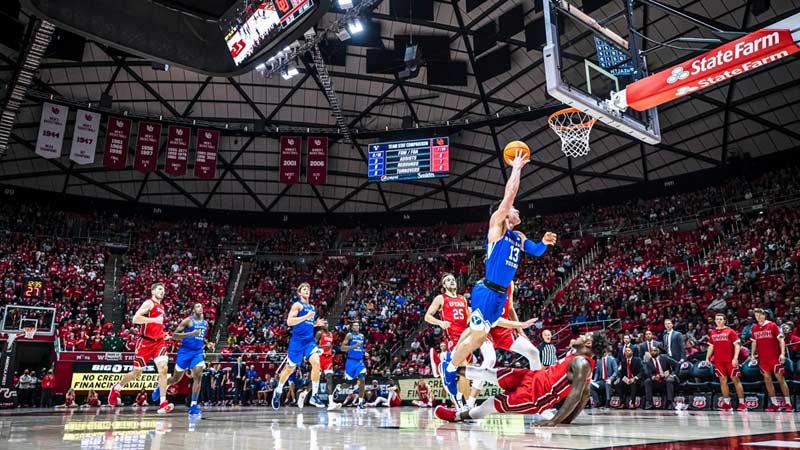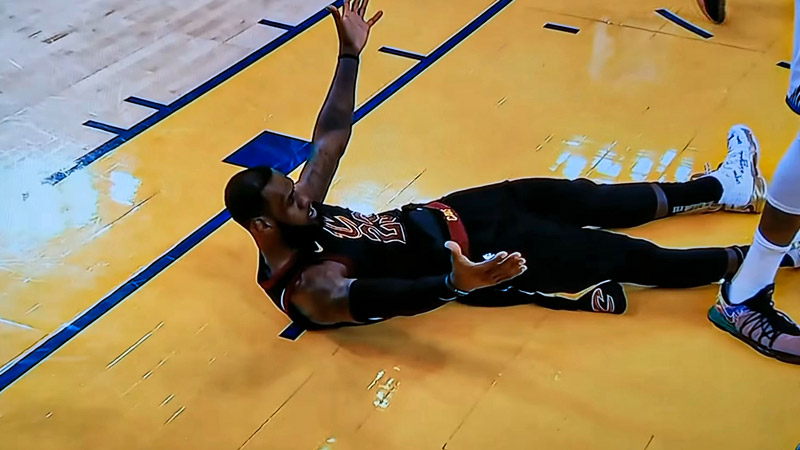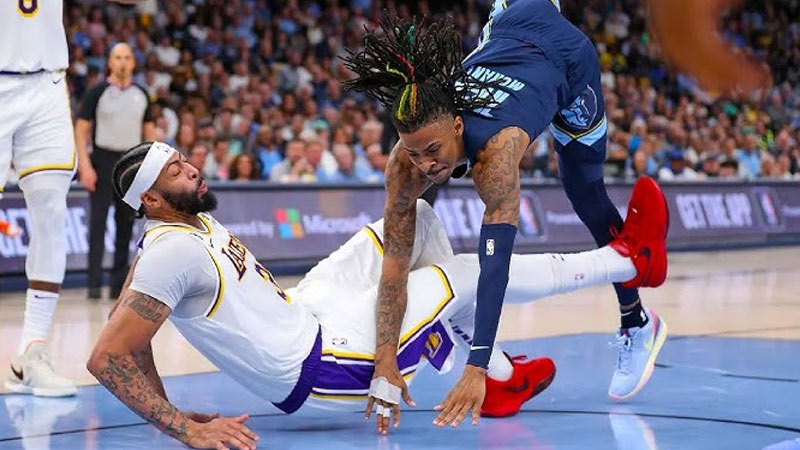Basketball is a dynamic and fast-paced game that involves strategic positioning and precise movements.
One such crucial aspect of the game is a charge, which refers to a defensive play where a player establishes the position and absorbs the impact from an offensive player.
In this blog post, we will delve into the concept of a charge in basketball, discussing its definition, techniques to get in position, penalties associated with charging fouls, and the key differences between charging and blocking fouls. So, stay calm and focused.
What Is a Charge in Basketball?
A charge in basketball is a defensive technique used to draw offensive fouls and regain possession of the ball.
It occurs when a defensive player establishes a legal guarding position, and an offensive player charges into them, resulting in a foul.
Taking charge requires skill, positioning, and the ability to absorb contact while maintaining a defensive stance and balance. Let’s delve deeper into the concept of a charge and explore its key elements.
Establishing a Legal Guarding Position
To successfully take charge, the defender must establish a legal guarding position. This means they must be in a stationary position and facing the offensive player before contact occurs. The defender should be outside the restricted area and have both feet on the floor.
Absorbing Contact and Maintaining Balance
When the offensive player charges into the defender, the defender must absorb the contact while maintaining their balance. This involves bracing for impact, maintaining a stable stance, and keeping their core engaged.
By absorbing the contact effectively, the defender can minimize the force of the collision and increase the likelihood of drawing a charging foul.
Proper Defensive Stance and Positioning
Taking a charge requires the defender to adopt a proper defensive stance and positioning. This includes staying low, with knees bent and arms extended to create a barrier.
The defender must maintain an active and engaged defensive stance throughout the play, anticipating the offensive player’s movements and reacting quickly to establish a legal guarding position.
Drawing Offensive Fouls and Regaining Possession
The primary objective of taking a charge is to draw an offensive foul, resulting in a turnover and the defender’s team regaining possession of the ball.
If the referee determines that the offensive player initiated the contact and the defender established a legal guarding position, an offensive foul is called. This rewards the defender’s effort and provides a strategic advantage to their team.
How to Get in Position to Take a Charge in Basketball?

To effectively get in position to take charge, defenders need to employ specific techniques and anticipate the offensive player’s movements. Here are some key steps and subheadings to consider when positioning yourself to take charge:
Step 1: Anticipate the Offensive Player’s Movements
Reading the offensive player’s body language and anticipating their drives or movements toward the basket.
Observing their speed, direction, and positioning to determine the best moment to set up for a charge.
Step 2: Establish a Legal Guarding Position
Quickly move into position to establish a legal guarding position in the path of the offensive player.
Ensure your feet are set, shoulder-width apart, and your body is square to the offensive player.
Step 3: Maintain a Low and Balanced Stance
Bend your knees and lower your center of gravity to maintain balance and stability.
Keep your feet grounded, allowing you to absorb contact without losing your position.
Step 4: Slide Laterally to Cut Off the Offensive Player’s Path
Utilize quick lateral movements to cut off the offensive player’s driving lane or path to the basket.
Shuffle your feet and maintain a defensive slide to stay in front of the offensive player.
Step 5: Time Your Positioning
Properly time your positioning to establish a legal guarding position before contact is made.
Avoid initiating contact and ensure you are stationary before the offensive player collides with you.
By implementing these techniques and subheadings, defenders can increase their chances of successfully taking charge in basketball.
It requires a combination of anticipation, positioning, balance, and timing to draw offensive fouls and regain possession for your team.
Remember, taking a charge is a defensive skill that requires practice, awareness, and the ability to absorb contact while maintaining proper defensive principles.
Penalties for Basketball Charging Foul

When a charging foul is committed, the offensive player is penalized, and the opposing team is awarded possession of the ball.
However, it is important to understand the specific penalties and situations that may arise from a charging foul. Here are some relevant subheadings to elaborate on this topic:
Offensive Player’s Penalties
Loss of possession
When a charging foul is called on the offensive player, their team loses possession of the ball. The opposing team is awarded the ball for an inbound play.
Personal fouls
The offensive player charged with a foul does not receive a personal foul. This is because they were in a legal guarding position at the time of contact.
Defensive Player’s Penalties
Blocking foul
In some instances, a defender may be charged with a blocking foul instead of a charging foul. This occurs when the defensive player is not in a legal guarding position or moves into the path of the offensive player.
Personal fouls
If a blocking foul is called on the defensive player, they receive a personal foul. Accumulating multiple personal fouls can lead to disqualification from the game.
Charging vs. Blocking Foul
Charging and blocking fouls are crucial concepts in basketball that can significantly impact the outcome of a game.
While they may appear similar at first glance, understanding the differences between these fouls is essential for players, coaches, and officials.
Charging Foul
A charging foul occurs when an offensive player runs into a defensive player who has already established a legal guarding position. To draw a charging foul, the defensive player must be stationary or moving laterally before the offensive player initiates contact.
The defensive player absorbs the impact of the collision and takes the hit without initiating any movement or illegal actions.
It is important to note that the defensive player must establish this position before the offensive player makes their move, or it may result in a blocking foul.
Blocking Foul
A blocking foul is called when the defensive player does not establish a legal guarding position or moves into the path of the offensive player.
To draw a blocking foul, the defender must be moving or not in a position to take the contact legally.
This can occur when the defensive player is still moving, sliding sideways, or not in a set position before the offensive player initiates contact.
A blocking foul is typically called when the defender is not able to absorb the impact and prevent the offensive player from advancing.
It is crucial for officials to make accurate judgments when determining whether a charging or blocking foul has occurred.
Factors such as the positioning of the defensive player, the timing of the offensive player’s movement, and the overall control and balance of both players are taken into consideration.
Making the correct call requires experience, knowledge of the rules, and the ability to analyze the situation in real time.
In some instances, the officials may call a no-call if they determine that neither a charging nor a blocking foul has occurred.
This decision is made when the contact is incidental or when it is challenging to determine which player was at fault.
FAQs
What is the primary objective of taking a charge in basketball?
The primary objective of taking a charge is to draw an offensive foul, forcing a turnover and regaining possession of the ball for the defending team.
It is a defensive strategy that can swing the momentum of the game and disrupt the offensive flow.
Can a player take a charge outside the restricted area?
Yes, a player can take a charge anywhere on the court as long as they establish a legal guarding position before the offensive player makes contact.
The restricted area is not a requirement for taking a charge, although it offers additional protection for the defensive player.
Is there a specific way to fall after taking a charge?
There is no specific way to fall after taking a charge, but defenders should aim to fall backward or to the side, away from the offensive player, to avoid unnecessary injuries.
The goal is to protect oneself and prevent any dangerous collisions with the offensive player.
Can a player take charge in transition or fast-break situations?
Yes, taking charge is possible in transition or fast-break situations, but it requires quick decision-making, positioning, and anticipation of the offensive player’s movements.
Defenders must be aware of their surroundings, establish a legal guarding position, and brace themselves for the impact.
Can a player take charge if they are in the air?
No, a player cannot take a charge if they are in the air, as they are not considered to be in a legal guarding position.
To draw a charge, the defensive player must establish a position before the offensive player leaves the ground for a shot or a pass.
Jumping into an offensive player while in the air would typically result in a blocking foul on the defender.
End Call
The concept of a charge is crucial for both offensive and defensive players in basketball. It is a defensive technique that requires anticipation, proper positioning, and the ability to absorb contact.
By mastering the art of taking charge, defenders can disrupt the opponent’s offensive flow, create turnovers, and provide a defensive advantage.
Conversely, offensive players must be mindful of avoiding charging fouls by making controlled drives and adjusting their movements to avoid contact with defenders in legal guarding positions.
By comprehending the rules and techniques surrounding charges, players can enhance their overall performance and contribute to a well-rounded team game. Thank you.







